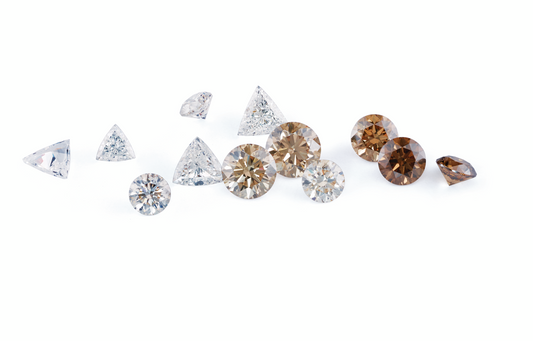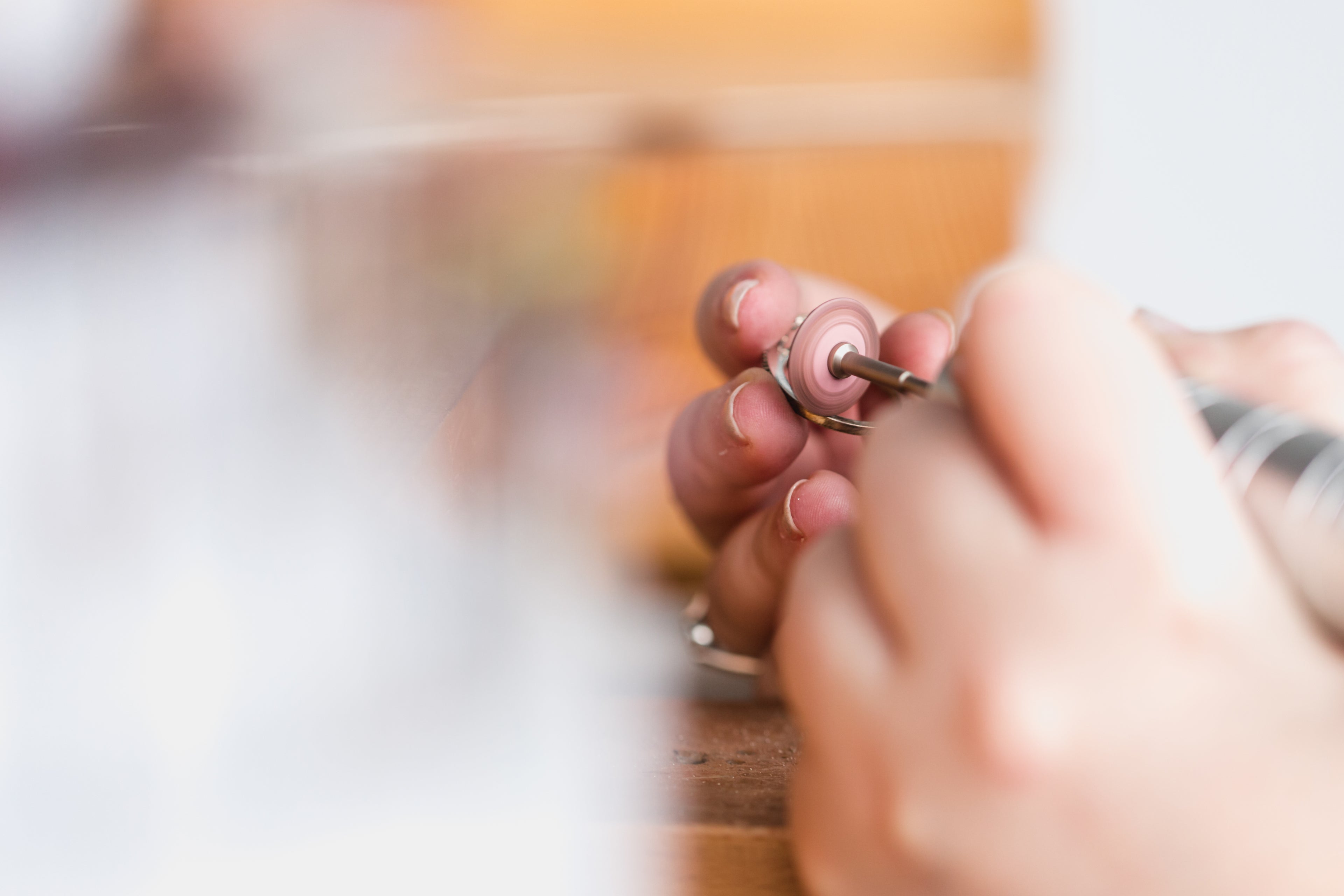Jewelry is a form of human expression that has spanned every corner of the globe for thousands of years. Jewelry encompasses so much of the human experience -from personal stories, cultural traditions, even spiritual beliefs.
Jewelry has been an intimate part of human expression since the earliest days of our species. Whether it's a simple bead made of bone or a dazzling diamond tiara, the act of adorning ourselves with beautiful things seems almost as natural as breathing. Across cultures, time periods, and geographies, jewelry has consistently served as more than just decoration—it’s been a tool for communication, a status symbol, and a tangible representation of spirituality, wealth, and personal identity.
It’s amazing to think how this seemingly simple act of wearing jewelry holds so much meaning. Let’s take a journey across time and space to explore how jewelry, as a universal human tradition, has influenced societies and cultures throughout history, and how it continues to shape us today.
Jewelry: A Primal Human Urge
Before organized society or even structured language, early humans had the desire to adorn themselves. It’s not just a modern concept—it's something primal. Archaeological evidence shows that early hominids decorated themselves with items found in nature like shells, bones, and stones, dating back as far as 100,000 years. These early pieces of jewelry were not just for beauty; they held symbolic significance, perhaps communicating social rank, group identity, or spiritual beliefs.
Shell beads from Skhul Cave in Israel and Blombos Cave in South Africa are some of the oldest examples of human jewelry. These simple yet beautiful beads show that even early humans felt the need to collect and wear objects that reflected their connection to the world around them.
Why this connection? The impulse to pick up a beautiful object—whether it's a shimmering stone or a uniquely shaped shell—seems universal. It’s almost as if the act of wearing something beautiful is tied to our humanity, a way of expressing who we are without needing words.
Jewelry’s Role in Ancient Civilizations
As civilizations began to flourish, jewelry evolved from mere adornment to a powerful symbol of wealth, spirituality, and societal status.
Mesopotamia and Egypt were some of the earliest societies where jewelry took on more complex meanings. In ancient Egypt, for instance, gold wasn’t just a precious metal; it was believed to be the skin of the gods. Egyptian pharaohs and elites adorned themselves with gold and lapis lazuli, not just to display their wealth, but as protection in the afterlife. Jewelry, especially pieces like scarabs and ankh necklaces, were believed to offer spiritual protection and divine favor. When King Tutankhamun’s tomb was discovered in 1922, it was filled with elaborate gold jewelry meant to accompany him on his journey to the afterlife—a powerful example of how jewelry transcended life and death in ancient Egypt.
In Greece and Rome, jewelry took on similar meanings but was often more practical as well. Roman citizens frequently wore signet rings that doubled as personal seals for signing important documents—blurring the line between luxury and practicality. Cameos and intaglios were popular, often worn as pendants or rings, and served as legal markers of identity. But jewelry in these civilizations wasn’t just about the practical—it was also about power. Greek women, for example, wore beautiful gold and gemstone necklaces, bracelets, and earrings to signify their social standing.
In Mesoamerican cultures like the Maya and Aztecs, jewelry had spiritual and religious significance. The Maya valued jade more than gold, associating it with life, fertility, and power. Aztec rulers wore elaborate headdresses and necklaces in sacred ceremonies, believing that these jewels held the power to communicate with the gods.
Jewelry in Religious and Spiritual Contexts
Across time, jewelry has often played a sacred role in religious ceremonies and spiritual practices. Whether used to signify a divine connection or worn as a protective amulet, jewelry in spiritual contexts carries deep meaning.
Take Buddhist prayer beads or mala beads, for example. These strings of beads are used during meditation, often with each bead representing a mantra or prayer, helping practitioners focus their minds and deepen their spiritual practice. In Christianity, the cross necklace serves not only as a symbol of faith but also as a sign of spiritual protection and connection to God.
Throughout history, gemstones, too, have been attributed with spiritual powers. In ancient Egypt, amulets were believed to protect their wearer from harm, illness, and negative energy. Turquoise in Native American cultures was thought to bring good fortune, health, and protection. Even within the Catholic Church, certain jewels like amethyst were worn by clergy members as symbols of piety, purity, and spirituality.
Jewelry and Status Across History
Perhaps no role of jewelry has been more universal across cultures than its ability to project status and power. Before the days of paper currency and modern banking, wealth was often measured in the form of gold, silver, and precious gemstones.
In medieval Europe, jewelry was heavily regulated by sumptuary laws, which dictated what certain social classes could and couldn’t wear. Gold, pearls, and precious gemstones were reserved for royalty and the aristocracy, while lower classes were restricted to simpler adornments. Jewelry wasn’t just a sign of wealth—it was a visual marker of one’s place in society.
And let's not forget how jewelry has driven global trade. Precious metals and gemstones like gold and diamonds were central to trade routes and the expansion of empires. During the gold rushes in the Americas and Australia in the 19th century, entire economies were built on the pursuit of gold, shaping the modern world and fueling global trade networks that continue today.
Jewelry Shaping Modern Cultures
Fast-forward to today, and jewelry still holds an immense place in our society—albeit in different ways.
Luxury goods have become synonymous with global jewelry brands like Cartier and Tiffany & Co., linking personal adornment with status and high society. Jewelry, now more than ever, represents not only wealth but also personal milestones—whether it’s an engagement ring symbolizing commitment, or a charm bracelet marking life’s special moments.
The tradition of the engagement ring itself is a fascinating example of how jewelry has shaped modern culture. The practice of giving diamond rings became widely popularized in the 20th century, thanks to a brilliant marketing campaign by De Beers. Today, it's a billion-dollar industry, with diamonds symbolizing eternal love and commitment.
Jewelry as a Reflection of Cultural Identity Today
Jewelry today, more than ever, is an expression of personal identity and cultural heritage.
In India, gold jewelry plays a central role in cultural identity, particularly in weddings and festivals. It’s seen not just as an adornment but as a symbol of prosperity and wealth. Similarly, in the Middle East, gold jewelry often serves as portable wealth, passed down through generations as a way of preserving family assets.
In the Western world, personal jewelry—whether it’s a family heirloom, charm bracelet, or engraved necklace—has become a way to memorialize significant moments in life. In fact, the growing trend of personalized jewelry is a testament to how we use jewelry to express who we are, where we’ve been, and what we believe.
Ethical and Sustainable Practices in Modern Jewelry
As we look toward the future, one thing is clear: jewelry’s role is evolving alongside our social and environmental consciousness. More consumers today are seeking ethically sourced and sustainable materials, like fair-trade gold and lab-grown diamonds. These conflict-free alternatives represent a shift in the way we think about luxury—one that prioritizes responsibility and sustainability over excess.
The Legacy of Jewelry: Past, Present, and Future
Jewelry has always been more than decoration. It’s a reflection of our humanity—our creativity, our beliefs, and our desire to leave a legacy. Whether it’s a centuries-old crown worn by a king or a simple necklace passed down through generations, jewelry connects us to the past, celebrates the present, and holds the potential to shape the future.
As we move forward, let’s keep asking: How can jewelry continue to honor our traditions while embracing modern values of sustainability and personal expression? It’s a question that will undoubtedly shape the jewelry industry—and the stories we tell with it—for generations to come.





